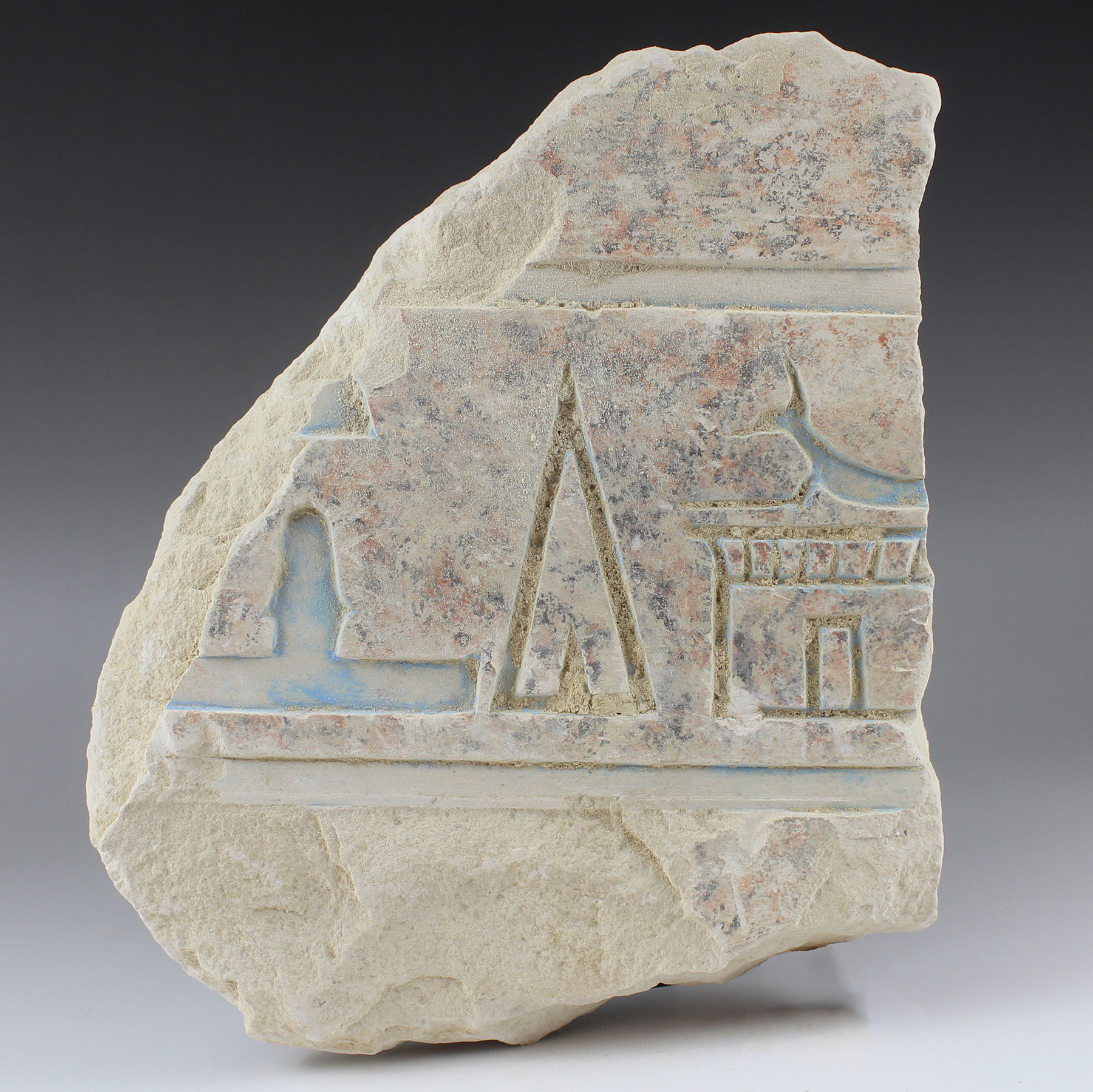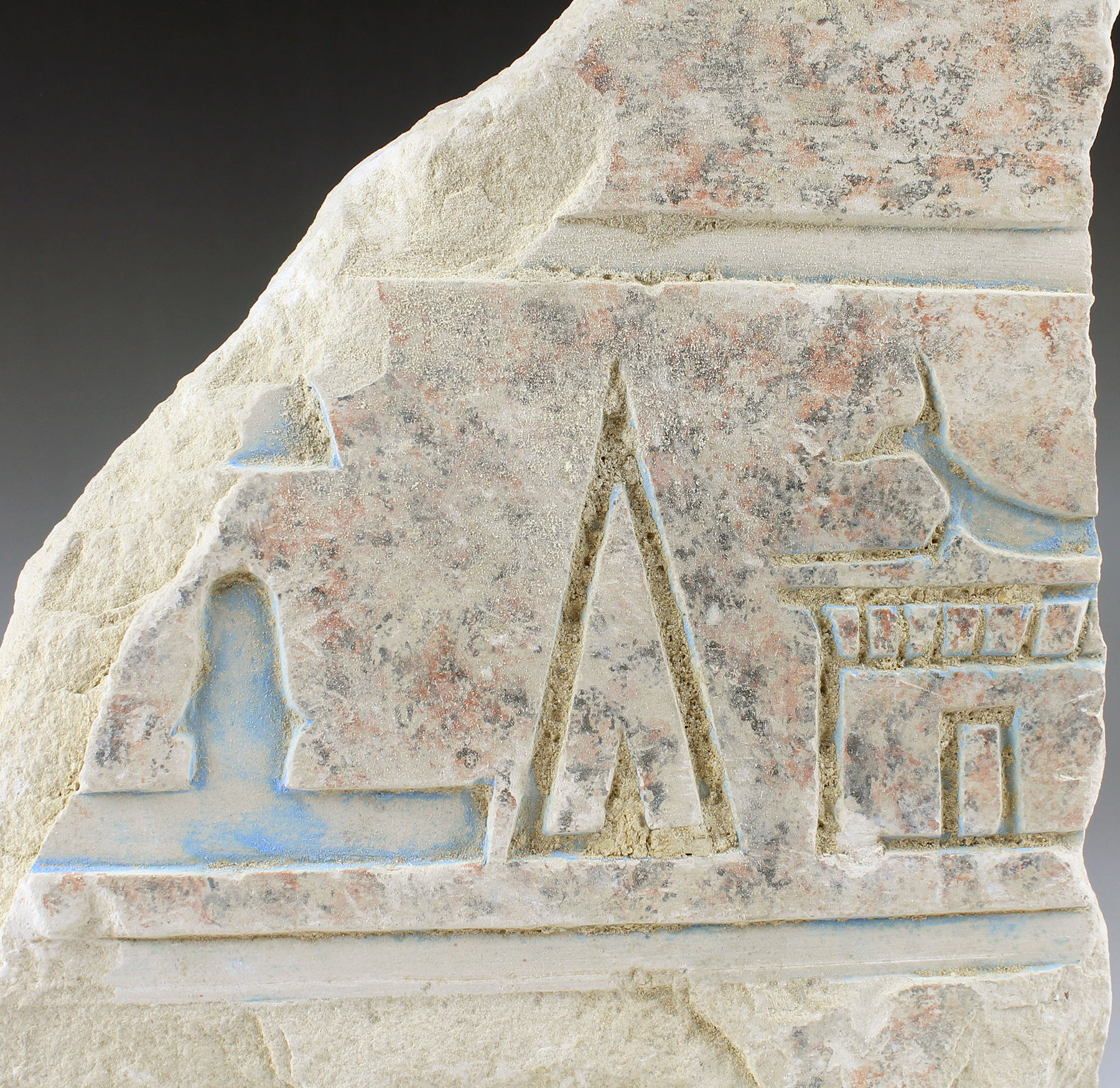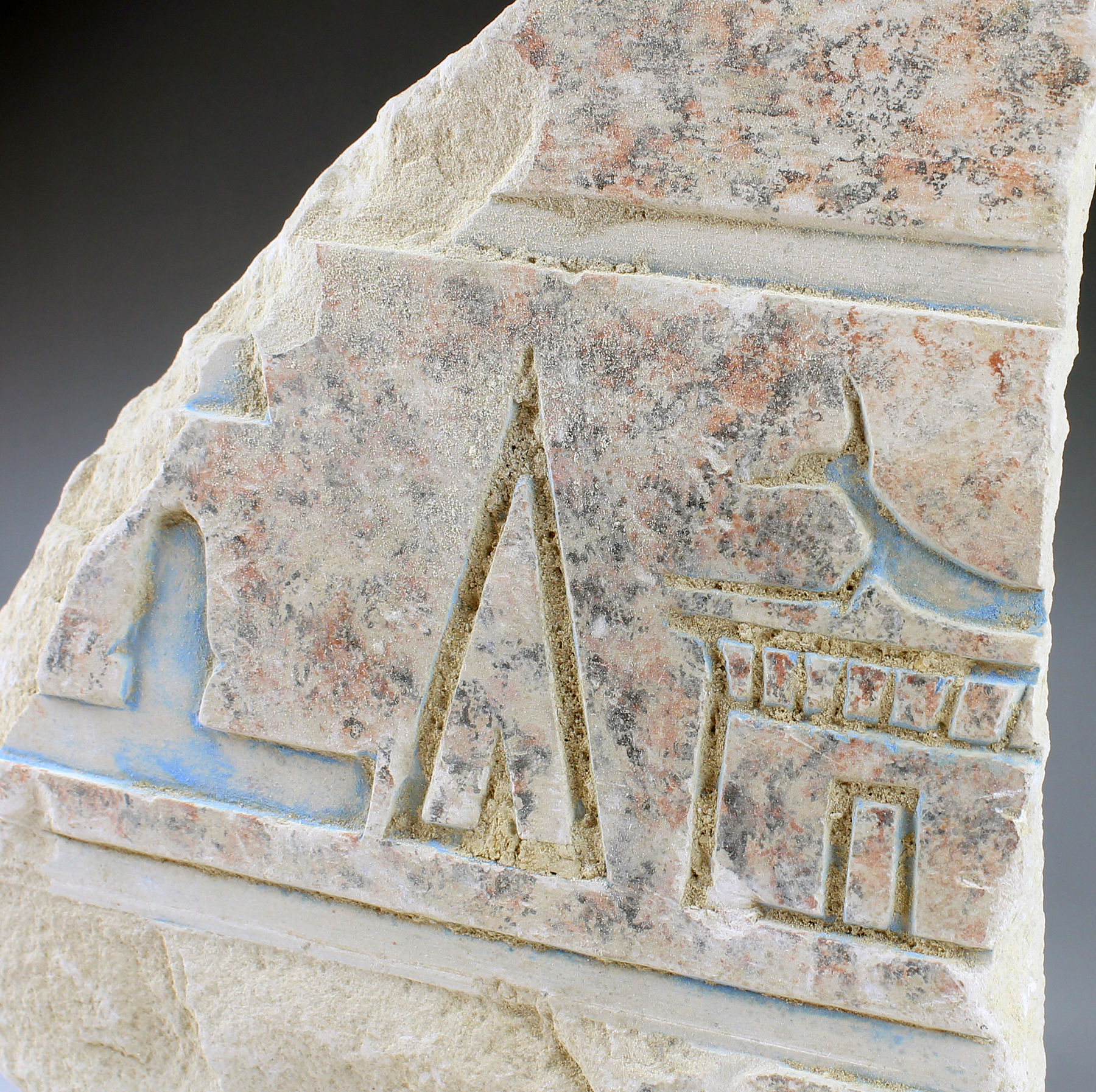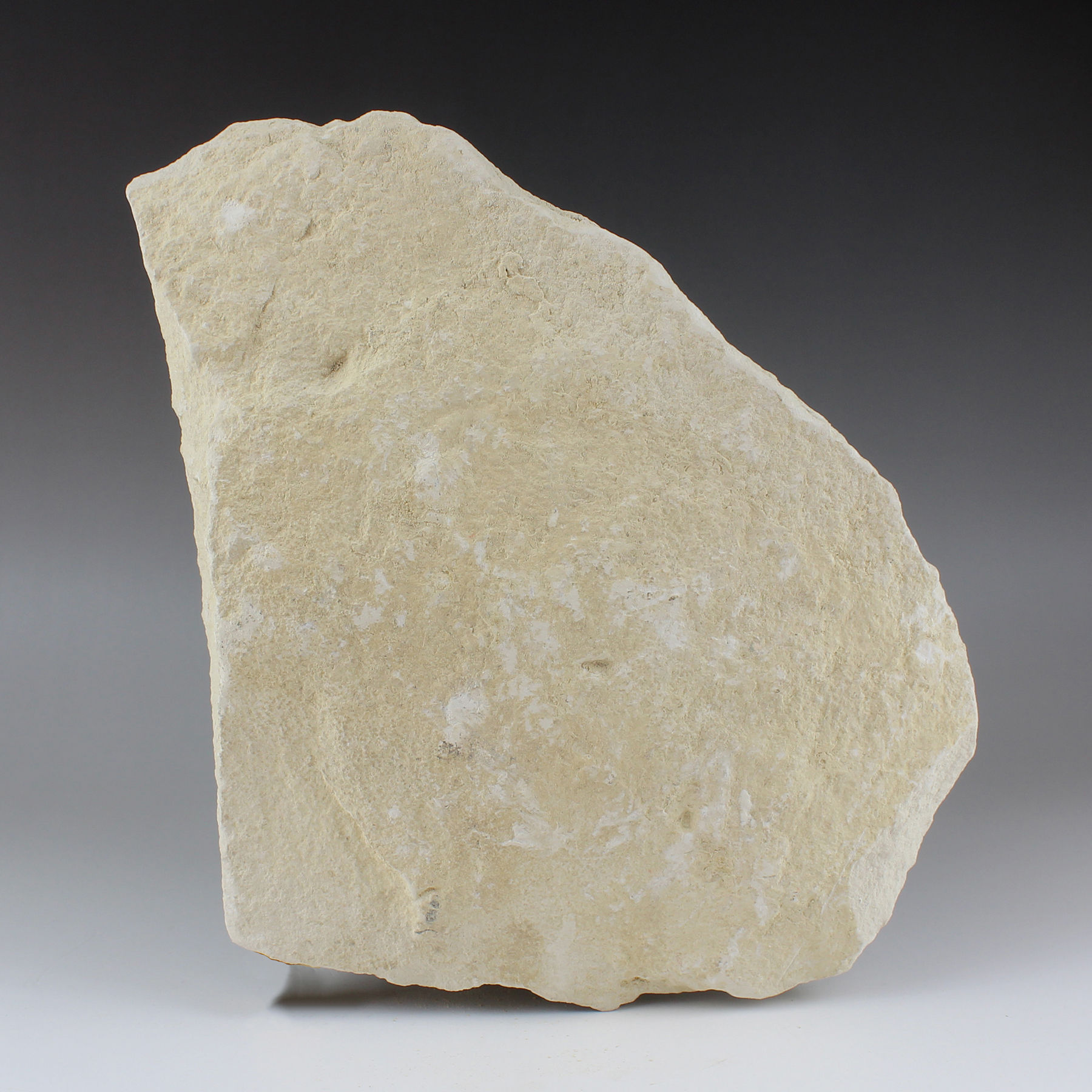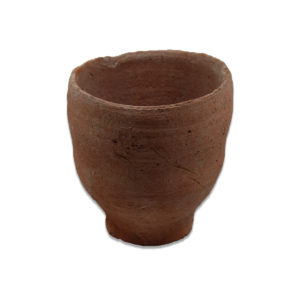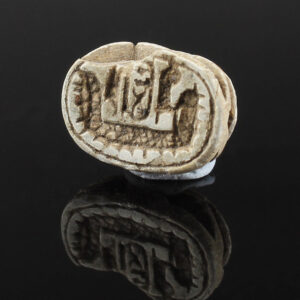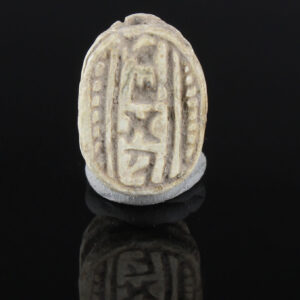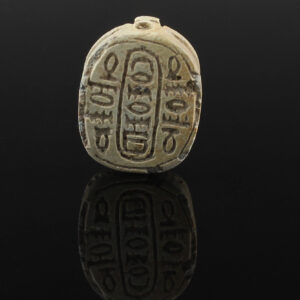Description
| ITEM | Part of a tomb door lintel with the Hetep Di Nesou formula |
| MATERIAL | Limestone |
| CULTURE | Egyptian |
| PERIOD | Late period, 664 – 332 B.C |
| DIMENSIONS | 225 mm x 193 mm x 40 mm |
| CONDITION | Good condition |
| PROVENANCE | Ex Private collection, acquired in European market prior to 1990’s |
The text reads as : hetep-di (nesou sign for king is missing) Inepu. An offering that the king makes to Anubis
Note also that limestone was used for this relief, but that you can see faint traces of black and red spots of paint.
This means the total relief was painted in a “Trope-l’oeil” effect to imitate the much more expensive Aswan granite. The ancients pimped here with paint a cheaper and much common to get by stone to imitate a very expensive one thus giving the tomb a much more important “look”
The background of the scene shows a faint trace of paint that resembles a trompe-l’oeil effect of red and black spotted granite. This was often used to imitate the more expensive and hard to get by stone from Aswan in private tombs.
The hieroglyphs themselves have been painted bleu in order to have them stand out. The paint used for this is Egyptian bleu, the first and oldest known man made blue pigment in history.
It is in fact a copper calcium silicate with the most probable chemical formula of CaCuSi4O10. The composition of samples found at ancient sites varies considerably.
In the royal context, we find the famous formula Hetep di Nesou (wishes): offerings that the King gives: By practising the ritual of the offering, His Majesty sacralises his kingdom and his subjects and puts them in direct contact with the gods.
It is not a prayer, but an energetic exchange, a re-energising of actuality that allows one to escape from temporal conditioning.
Hotep: peace, propitiation, satisfaction, strong links with the gods and ancestors who can only consume ingredients spiritualised by the alchemical rites of the offering
As for the royal officiant, he becomes an ally of the invisible powers that maintain the proper functioning of the universe
Linguistically explained: The Hetep-di-nesu formula is a sacrificial formula so called by the Egyptologists because it always begins with the words H.t.p-di.nsw. “an offering given by the king”.
Note that the sign nesou (king) is written in front for respectful reasons and that the sign Di, for aesthetic reasons is written in front of the signs H.t.p (hetep).
“Di” is a form of the verb “R.di”: “to give”, more precisely the relative form. The relative form is used in relative sentences (clauses) when the subject of the verb (in this case, “the king”) differs from the word that precedes it (in this case, “sacrifice”). So literally it says: “sacrifice that-gives king”.
After the words Hetep-di-nesou follows the name of a god, provided with the necessary epithets. His name is usually introduced by “n” ( to, for).
The Hetep-di-nesou-offering is a funerary offering, so it was given for the benefit of a deceased person. That is why the god that is invoked usually has to do with the world of the dead.
The next part of the offering formula often starts with a wish “r.di.f” “(in order) to give”, where “he” is the god invoked in the previous part of the formula. R.di.f is a conjugated form of the verb R.di where the suffix pronoun ” f ” serves as a subjunctive. This verb form is called sedjem.f because it is composed as follows: verb-subject, where the subject can be a noun or a group of words, or a suffix pronoun when the subject is represented by a personal pronoun.
After R.di.f follows the enumeration of the sacrifices that the god in question is asked to give to the deceased, and the whole is closed by the words N-ka-n “for the Ka of….” (Ka = the soul in ancient Egypt)
So the meaning of the hetep-di-nesou-formula is that the king (i.e. That his deputy in his name) makes an offering to a god usually related to the death cult, so that he would give all kinds of offerings to the Ka (=soul) of the deceased.
The giving of offerings in exchange for a quid pro quo from the gods was called “do ut des” by the Romans, a term which is still used today to describe the principle of Egyptian offerings.


